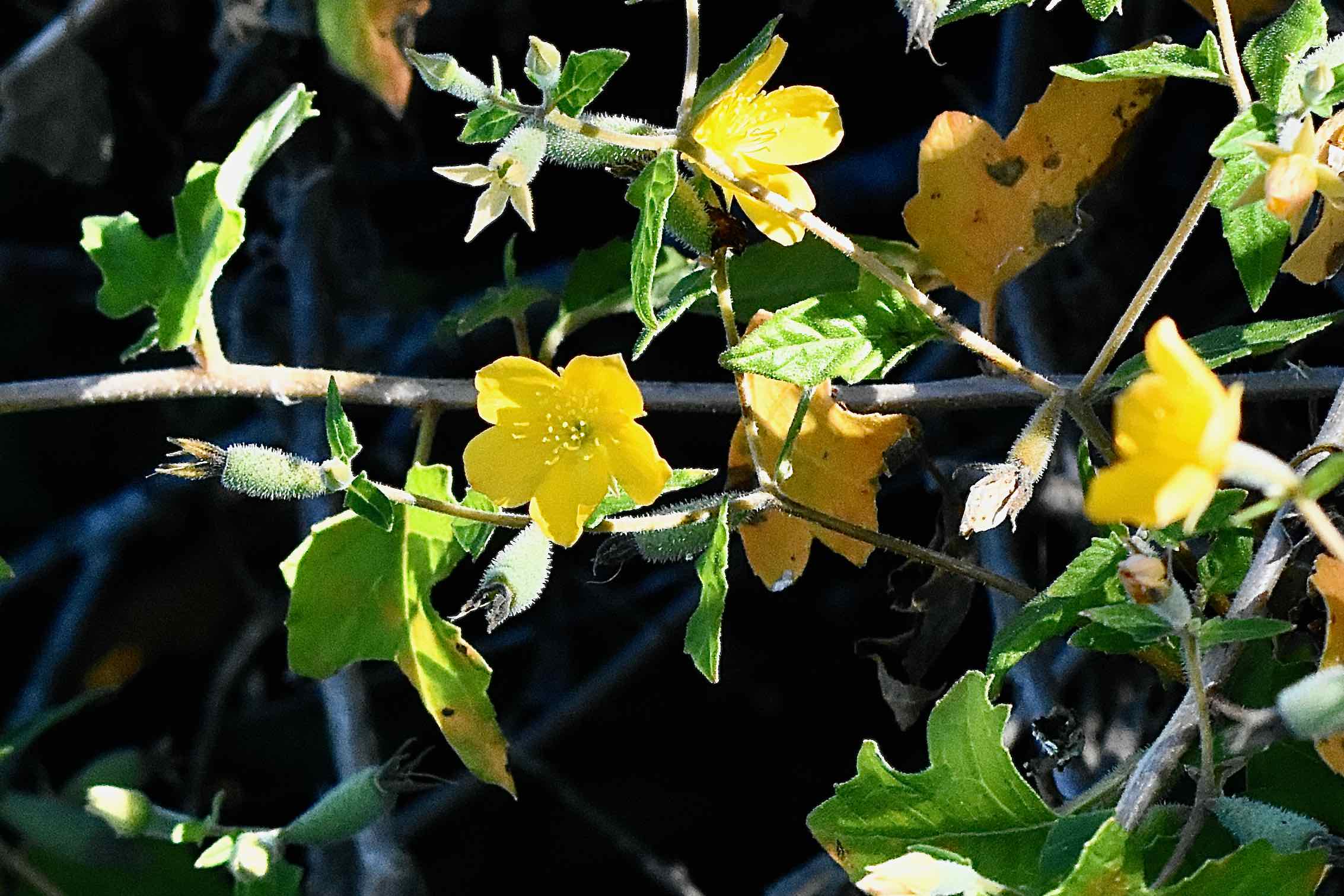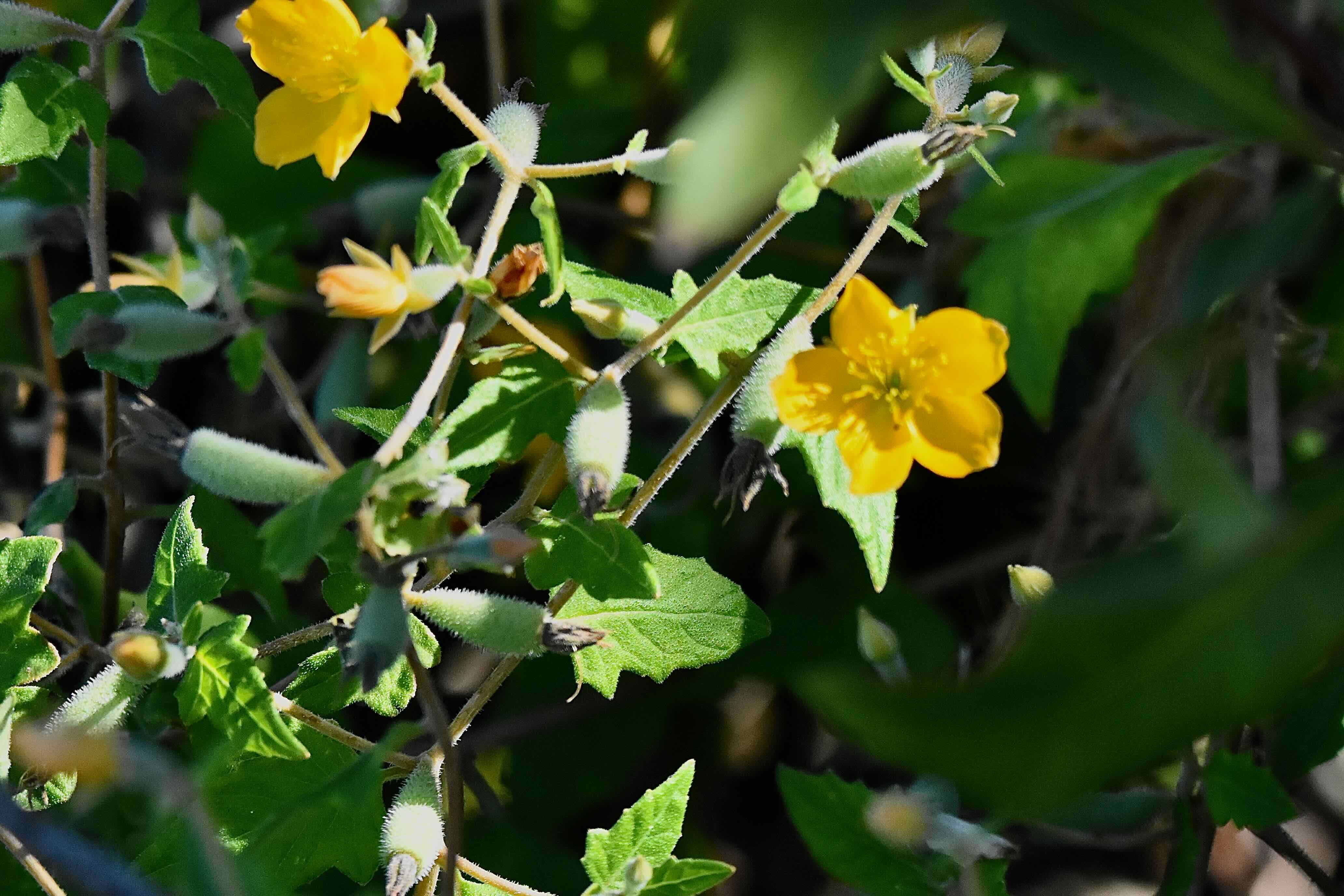
Poorman's patch, photographed at Bailey Tract, J.N. "Ding" Darling National Wildlife Refuge, Sanibel, Lee County, in October 2016.
This question stumped us: How did poorman’s patch get its name? Our guesses: It supposedly grows in poor soil, a poor man’s patch of land? The leaves resembles (some how) a patch on a poor man’s clothes?
Neither explains the unusual name, though guess no. 2 comes close.
A second common name, stickleaf, comes even closer to explaining the origin of the first: pretty much every part of the plant is barbed or bristly and will stick to anything or anyone that brushes up against. Your pants will look like they’ve been “patched” with sundry plant parts. Your skin will look like it’s been patched. Poorman’s patch.
Now that that puzzle is solved, let’s get to the botanical basics.
Poorman’s patch, Mentzelia floridana, is a Florida native found mostly in coastal counties as far north as Duval on the Atlantic Coast and Levy on the Gulf. It’s found in a few inland counties as well, namely Hendry and Glades. It’s not found in any other state in the union, but it does grow in the Bahamas.
It’s found throughout South Florida, but the Institute for Regional Conservation considers it rare.
Poorman’s patch is shrubby, standing perhaps three feet tall. As it gets over a couple of feet tall, the stem can become decumbent, meaning it will flop over and lay along the ground.
Leaves are simple, alternately arranged along the stem, variable in shape — they could be oval or elliptical or other. They can be entire, meaning smooth along the edges, or serrated or even lobed at the base.
What first catches your eye, however, is poorman’s patch’s star-shaped flowers. They are about an inch across, with five petal, ranging in color from pale yellow to nearly orange. Depending on which source you’re reading, poorman’s patch blooms year-round or September to May. The difference could be attributed to geography or refer to a peak season.
Preferred habitats include beach dunes, coastal strands, coastal hammocks and sand flats, disturbed areas and shell mounds or middens.
The second thing you’ll notice if you brush against poorman’s patch is that bits of the plant will grab onto you — flowers seed heads, leaves and more. Pretty much the entire plant is covered in barbed or bristly hairs that will latch onto man or beast as it moves through it.
The bristles and barbs are typical features of plants in the Mentzelia genera, as are pale stems, also seen on poorman’s patch. More about Mentzelia: members are typically called blazingstars (not to be confused with the purple flowers that grace scrubs and scrubby flatwoods come late summer and fall) or stickleafs.
Mentzelia honors 17th century German physician and botantist Christian Mentzel. The great Swedish naturalist Carl Linnaeus created and described the genera and gave it the name in 1753, about 50 years after Mentzel’s death.
There aren’t a lot of human uses for poorman’s patch. It is cultivated, but the Institute for Regional Conservation doesn’t recommend it for use in gardens because it tends to be weedy.
The Florida Museum of Natural History notes that poorman’s patch was used to treat fevers.
Other common names include poorman’s patches, Florida stickleaf and Florida blazingstar. Poorman’s patch is a member of Loasaceae, the dogwood family.
Baily Tract — J.N. “Ding” Darling National Wildlife Refuge



